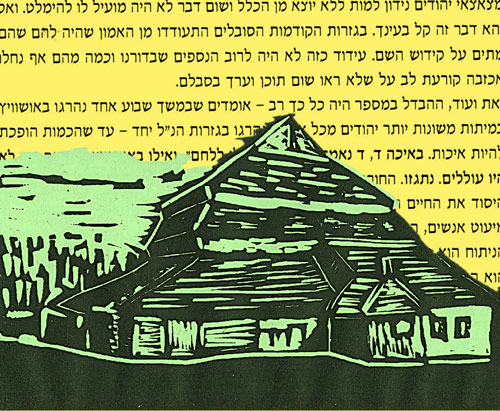Lost Treasures: The Wooden Synagogues of Eastern Europe The Artwork of Bill Farran
Hvizdets, Ukraine - Original Linocut
Hvizdets, Ukraine - Original Linocut
Yiddish name: Gvozdetz
Previous names, countries: Gwoździec, Poland
The history of Hvizdets can be traced to 1557 when a private town was established there, drawing significant income from organizing fairs and markets. By 1635 there was a Jewish presence. Their wooden synagogue was built between 1640-1650 and was burned down during World War I. When the synagogue was reconfigured during 1700-1730, it was built in the Baroque style, the first of its kind in the area. Hebrew inscriptions and colorful animal figures covered the ceiling and walls. The synagogue’s cupola was replicated three quarter size for the Museum of Polish Jewish History in Warsaw, Poland, as an example of beautiful architecture and design combining religious images and texts, using Jewish and Polish traditions.
On June 2, 1941, the town was seized by Hungarian troops allied with Germany and replaced by Germans in November. A ghetto was established in early 1942 with 1,540 people. On April 12 Germans and Ukrainians surrounded the ghetto. Jews rushed out as buildings were set on fire, probably to force those out who were still in hiding. Several hundred Jews were driven to a nearby forest and shot; the town’s survivors were forced to collect the bodies and incinerate them. The ghetto was liquidated on September 8, 1942, and the town’s Jews were transported to the death camp in Belzec three days later.
Purchase a print
Original linocut prints are 8x10 inches, and are available either unmatted or in an 11x14 matte.
I also offer matted 5x7 digital prints. These prints are created from high-res digital images and come in an 8x10 matte.
For this synagogue I have created an additional digital print, with Hebrew lettering in the background. These prints are also created from high-res digital images and come in an 8x10 matte.



